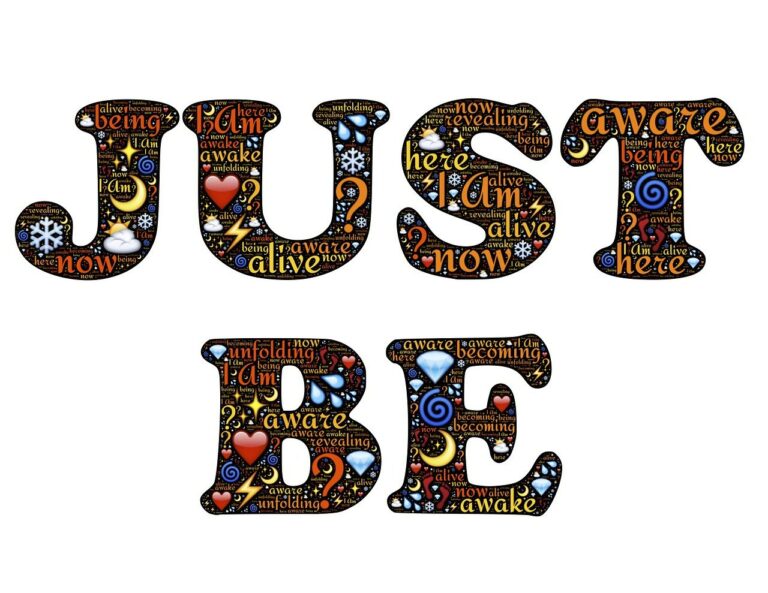Introduction
Effective communication serves as the cornerstone for igniting collaboration and synergy within any group or team. At its essence, communication is not just about the exchange of words but rather the art of conveying ideas, emotions, and intentions with clarity and purpose. By mastering the intricacies of communication, individuals can bridge gaps, foster understanding, and cultivate shared visions that propel collective efforts towards success.
The Significance of Effective Communication in Fostering Collaboration
Communication forms the bedrock upon which successful collaborations are built. When individuals within a team can articulate their thoughts clearly and listen actively to one another, they create a space where ideas flow freely and bonds deepen.
Without effective communication, misunderstandings fester, tensions rise, and productivity dwindles. It is through open, honest dialogue that teams can align their goals, leverage diverse perspectives, and navigate challenges with cohesion.
An Overview of the Benefits of Getting People on the Same Page
When everyone is on the same page – sharing a common understanding and working towards a unified purpose – remarkable things happen. Collaboration becomes seamless as team members operate in sync towards shared objectives.
By fostering an environment where people feel heard, valued, and aligned with organizational goals, leaders can unlock creativity, innovation, and peak performance. The benefits extend beyond mere task completion; they encompass building resilient relationships based on trust, respect, and mutual support.
Understanding Your Audience
Recognizing Different Communication Styles and Preferences
Understanding that each individual has a unique communication style and preference is fundamental in establishing effective communication and fostering collaboration. Some people may be more visual learners, while others are auditory or kinesthetic learners.
Recognizing these differences can greatly enhance your ability to convey messages in a way that resonates with diverse audiences. Visual learners may appreciate diagrams, charts, or graphs to supplement your verbal explanations, while auditory learners may prefer detailed explanations or discussions.
Kinesthetic learners might benefit from hands-on experiences or practical demonstrations. Moreover, being attentive to non-verbal cues such as body language, facial expressions, and tone of voice can provide valuable insights into how your message is being received by different individuals.
For instance, someone who maintains eye contact and nods along may indicate understanding and agreement, whereas crossed arms or a furrowed brow could signal confusion or disagreement. By paying attention to these subtle cues, you can adjust your communication approach accordingly to ensure clarity and alignment with varied communication styles.
Tailoring Your Message to Resonate with Diverse Audiences
Tailoring your message involves adapting your communication style, tone, and content to effectively connect with diverse audiences. One size does not fit all when it comes to conveying information or ideas; therefore, it is essential to customize your message based on the preferences and characteristics of your audience. Consider factors such as cultural background, educational level, professional experience, age group, and even personality traits when crafting your message.
To resonate with diverse audiences effectively, it is crucial to use language that is inclusive and easily understandable by all parties involved. Avoiding jargon or technical terms that may alienate certain individuals can help ensure that everyone grasps the key points you are trying to convey.
Additionally, employing storytelling techniques or real-life examples can make abstract concepts more relatable and engaging for the audience. By tailoring your message in this manner, you demonstrate a genuine effort to connect with others on their level while promoting clear understanding and alignment across different groups within a collaborative setting.
Building Trust and Rapport
Establishing Credibility Through Active Listening and Empathy
Effective communication is not just about talking; it also involves actively listening to others. By demonstrating genuine interest in what others have to say, you can establish credibility and build trust.
Active listening entails giving your undivided attention, maintaining eye contact, nodding in acknowledgment, and paraphrasing what the other person has said to show understanding. Empathy is another crucial component of building trust.
Put yourself in the shoes of your audience, understand their perspectives and emotions, and respond with sensitivity. When people feel heard and understood, they are more likely to trust you and align with your goals.
Cultivating Relationships Based on Mutual Respect and Understanding
Mutual respect forms the foundation of any successful collaboration. Treat others with dignity, value their opinions, and acknowledge their contributions. Respect begets respect; as you demonstrate regard for others’ ideas and perspectives, they are more inclined to reciprocate.
Understanding is equally important in fostering productive relationships. Take the time to learn about the backgrounds, experiences, and values of those you are collaborating with.
By empathizing with their unique circumstances and appreciating their diversity, you create a harmonious environment where everyone feels valued and understood. Of this section on building trust and rapport through active listening, empathy, mutual respect,and understanding; it’s essential to remember that effective communication is a two-way street that requires both speaking clearly as well as listening intently.Lead by example by embodying these qualities yourself – actively listen when others speak,give thoughtful responses that show empathy,and treat everyone with respect.By prioritizing strong relationships built on trust,you pave the way for successful collaborations where all parties feel valued,cared for,and motivated to work towards shared objectives
Setting Clear Goals and Expectations
Defining Objectives and Desired Outcomes Upfront
Effective communication for collaboration begins with a clear articulation of the goals and outcomes expected from a collective endeavor. When initiating a project or task, it is crucial to outline specific objectives that provide a roadmap for all team members to follow.
By clearly defining what needs to be achieved, you align everyone’s efforts towards a common purpose, minimizing misunderstandings and maximizing productivity. Moreover, setting measurable goals enables progress tracking and accountability, ensuring that tasks are completed in a timely manner.
Communicating Roles, Responsibilities, and Timelines Effectively
In addition to defining overarching objectives, it is equally important to allocate roles and responsibilities among team members. Each individual should have a distinct understanding of their duties within the project framework to avoid duplication of efforts or gaps in task completion.
Clearly outlining responsibilities helps distribute workload evenly and promotes accountability within the team. Furthermore, establishing realistic timelines for deliverables is essential for managing expectations and ensuring efficient progress towards achieving goals.
Communicating these timelines effectively allows team members to plan their work accordingly and prioritize tasks based on deadlines. Setting clear goals and expectations involves not only articulating what needs to be achieved but also delineating who is responsible for each aspect of the project and when tasks need to be completed.
This proactive approach lays the foundation for effective collaboration by providing clarity on the direction of the effort while fostering accountability among team members. By communicating objectives, roles, responsibilities, and timelines explicitly from the outset, you create a structured environment that promotes efficiency, teamwork, and ultimately successful outcomes.
Leveraging Face-to-Face Meetings for Important Discussions
Face-to-face meetings provide a valuable platform for communication that goes beyond words. The non-verbal cues, such as body language and facial expressions, play a significant role in conveying emotions and establishing rapport.
In important discussions where clarity is crucial, meeting in person allows for real-time feedback and immediate clarification of any misunderstandings. Furthermore, face-to-face interactions foster a sense of connection and trust among team members that is challenging to replicate through digital means.
When planning face-to-face meetings, it’s essential to set a clear agenda beforehand to ensure that the discussion stays on track and achieves its objectives. Designate a neutral and conducive space for the meeting that allows everyone to participate actively without distractions.
Encourage open dialogue by creating an inclusive environment where all voices are heard and respected. Utilize visual aids or props if necessary to enhance understanding and engagement during the discussion.
Incorporating Digital Tools for Seamless Collaboration (e.g., Email, Video Conferencing)
In today’s fast-paced work environment, digital tools have become indispensable for facilitating collaboration across geographical boundaries. Email serves as a convenient mode of communication for sharing detailed information, documents, or updates asynchronously.
It allows team members to stay informed and connected even when they are not physically present in the same location. Video conferencing platforms enable real-time virtual meetings where participants can see each other’s expressions and reactions, simulating the feeling of being in the same room.
To maximize the effectiveness of digital tools for collaboration, it’s essential to choose the right platform based on the specific needs of your team. Conduct training sessions if necessary to familiarize everyone with the features and functionalities of the selected tools.
Establish protocols for using digital tools to ensure efficient communication flow while respecting individual preferences and time zones. Regularly evaluate the effectiveness of these tools in fostering collaboration and be open to exploring new technologies that may further enhance teamwork.
Encouraging Open Dialogue and Feedback
In any collaborative effort, open dialogue and feedback are crucial components for achieving alignment among team members. Creating a safe space where individuals feel comfortable sharing ideas and concerns is essential for fostering a culture of trust and transparency.
By encouraging open communication, team members are more likely to express their thoughts, provide constructive criticism, and offer innovative solutions to challenges. Creating a Safe Space for Sharing Ideas and Concerns: To establish an environment conducive to open dialogue, leaders must emphasize the importance of psychological safety within the team.
This involves promoting a culture where individuals are encouraged to speak up without fear of criticism or reprisal. By actively listening to all perspectives and valuing diverse opinions, team members feel empowered to share their ideas openly, fostering creativity and collaboration.
Soliciting Input from All Team Members to Foster Inclusivity
Soliciting input from all team members: Inclusivity is key in ensuring that every voice is heard and valued in the collaboration process. By actively seeking input from all team members, regardless of their position or seniority, leaders can tap into a wealth of diverse perspectives that can lead to more innovative solutions and better decision-making. This approach not only fosters a sense of belonging but also creates a more dynamic and inclusive work environment where everyone feels respected and valued.
Resolving Conflicts Constructively
Conflicts are inevitable in any collaborative setting, but how we address and resolve them can make all the difference in maintaining productive relationships. One key approach is to address disagreements proactively to prevent escalation.
By nipping potential conflicts in the bud, you can create a more harmonious work environment where issues are dealt with swiftly and effectively. This involves being attuned to early signs of discord, such as misunderstandings or differing perspectives, and addressing them openly and constructively before they snowball into more significant problems. Implementing conflict resolution strategies to reach consensus
When conflicts do arise, it is essential to have a toolkit of conflict resolution strategies at your disposal to navigate towards consensus. One effective approach is mediation, where a neutral third party helps facilitate dialogue and find common ground between conflicting parties. This process can help uncover underlying issues, improve communication, and guide individuals towards mutually beneficial solutions.
Another strategy is compromise, where each side makes concessions to meet halfway on contentious issues. Finding a middle ground often involves creative problem-solving and a willingness to prioritize the greater good of the collaborative effort over individual preferences.
Successfully resolving conflicts requires a combination of active listening, empathy, and a commitment to finding win-win solutions that benefit all parties involved. By staying calm and focused on understanding each other’s perspectives, you can foster an atmosphere of respect and cooperation even amidst disagreement. Ultimately, conflict resolution should aim not only to resolve immediate tensions but also to strengthen relationships by building trust through transparent communication and fair resolutions.
Celebrating Achievements and Milestones
Recognizing Individual Contributions Towards Shared Goals
In any collaborative effort, it is essential to acknowledge and appreciate the individual contributions that have collectively led to the achievement of shared goals. Recognizing the unique skills, talents, and efforts of team members not only boosts morale but also reinforces a sense of accomplishment.
By highlighting specific instances where individuals went above and beyond in their roles, you can inspire others to strive for excellence and showcase the value of each person’s contribution to the collective success. Moreover, recognizing individual contributions fosters a culture of inclusivity and equity within the team.
It ensures that everyone feels seen, heard, and valued for their efforts, regardless of their position or level of seniority. By shining a spotlight on diverse talents and perspectives, you promote a sense of unity and collaboration among team members.
This recognition can also serve as motivation for individuals to continue investing their time and energy into achieving common objectives. Celebrating milestones through individual recognition not only boosts morale but also strengthens the bond between team members.
Acknowledging the hard work and dedication that each person brings to the table creates a sense of camaraderie and shared purpose within the team. When individuals feel appreciated for their contributions towards shared goals, they are more likely to remain committed to working collaboratively towards future successes.
Reinforcing a Culture of Appreciation Through Positive Reinforcement
Positive reinforcement plays a crucial role in fostering a culture of appreciation within a collaborative environment. By consistently acknowledging and rewarding desirable behaviors that align with shared goals, you reinforce positive attitudes and actions among team members. Whether it be through verbal praise, written commendations, or tangible rewards such as incentives or bonuses, positive reinforcement acts as a powerful motivator for continued excellence.
Furthermore, creating rituals or traditions around appreciating achievements can further solidify a culture of positivity within the team. Whether it’s hosting monthly recognition ceremonies or incorporating shoutouts during regular meetings, these practices help normalize expressions of gratitude and celebration.
When appreciation becomes ingrained in the fabric of everyday interactions, it enhances trust among team members while fostering an environment conducive to open communication and collaboration. Embracing positive reinforcement not only boosts individual morale but also contributes to overall team cohesion and productivity.
When team members feel valued for their hard work and dedication towards common goals, they are more likely to engage proactively in collaborative efforts. By cultivating an atmosphere where appreciation is openly expressed and celebrated, you create a supportive ecosystem where each person’s contribution is recognized as integral to collective success.
Continuous Improvement Through Reflection
Seeking feedback for ongoing growth opportunities
In the pursuit of aligning individuals toward a common objective, the practice of seeking feedback serves as a cornerstone for continuous improvement. By actively soliciting input from team members, leaders can gain valuable insights into areas that require enhancement or refinement.
Feedback provides a unique perspective that may not be immediately apparent, enabling individuals to identify blind spots and address them proactively. Embracing feedback as a form of constructive criticism fosters an environment conducive to growth and development, paving the way for enhanced collaboration and alignment.
Furthermore, seeking feedback demonstrates a commitment to self-awareness and personal growth. It signifies a willingness to acknowledge one’s own limitations and actively work towards improvement.
By valuing the perspectives of others and remaining open to critique, individuals can leverage feedback as a catalyst for positive change. This reciprocal exchange of ideas cultivates a culture of continuous learning within teams, where each member contributes to the collective evolution through constructive feedback loops.
Moreover, incorporating feedback into regular reflection processes nurtures a culture of accountability and transparency. When team members feel empowered to share their observations and suggestions openly, it fosters trust and mutual respect within the group dynamic.
This open communication channel not only facilitates individual growth but also strengthens the collaborative fabric that binds diverse personalities together in pursuit of shared goals. Seeking feedback becomes not just a means for personal improvement but an integral part of fostering collaboration grounded in understanding and unity. —
Embracing a mindset of learning from both successes and failures
To truly get people on the same page in any collaborative endeavor, it is essential to embrace an adaptive mindset that recognizes the value inherent in both successes and failures. Successes offer validation for effective strategies employed but can sometimes breed complacency if not approached with humility. On the other hand, failures provide invaluable lessons that propel growth and innovation if viewed through a lens of opportunity rather than defeat.
Embracing this dualistic approach to learning cultivates resilience within teams while fostering an environment where experimentation is encouraged without fear of reprisal. Learning from successes involves acknowledging achievements not as endpoints but as milestones along an ongoing journey towards excellence.
Celebrating wins should be accompanied by introspection on what contributed to their attainment so that these positive patterns can be replicated in future endeavors. By distilling key takeaways from successful outcomes, individuals can refine their approaches systematically while leveraging past victories as stepping stones towards even greater heights.
Conversely, learning from failures requires embracing vulnerability and accepting setbacks as part of the iterative process towards success. Instead of viewing mistakes as reflections of incompetence or inadequacy, reframing them as opportunities for growth empowers individuals to glean insights that would otherwise remain hidden in times of triumph alone.
Conclusion
Recap of Key Strategies for Effective Communication in Fostering Collaboration
Effective communication is the cornerstone of successful collaboration. By understanding your audience, building trust, setting clear goals and expectations, utilizing various communication channels, encouraging open dialogue and feedback, resolving conflicts constructively, celebrating achievements, and continuously seeking improvement through reflection, you are laying a strong foundation for cohesive teamwork. Tailoring your messages to resonate with diverse audiences and creating a culture of open communication will enhance productivity and harmony within any group setting.
Encouragement to Apply These Principles in Various Personal or Professional Settings
As you reflect on the strategies outlined in this article, remember that effective communication is a skill that can be honed and refined over time. Whether you are leading a team at work, collaborating with peers on a project, or navigating personal relationships, the principles discussed here can be applied universally. Embrace the opportunity to connect authentically with others, listen actively, and communicate with empathy.
By incorporating these strategies into your interactions both professionally and personally, you can foster deeper connections and achieve greater collective success. In a world where collaboration is key to innovation and progress, your commitment to enhancing communication practices will not only benefit those around you but also contribute to your own growth and fulfillment.
By cultivating an environment where ideas are freely exchanged, conflicts are resolved respectfully, achievements are celebrated collectively, and learning is embraced wholeheartedly, you are fostering a culture of synergy and mutual respect. Embrace the power of effective communication as a catalyst for positive change in all aspects of your life.






